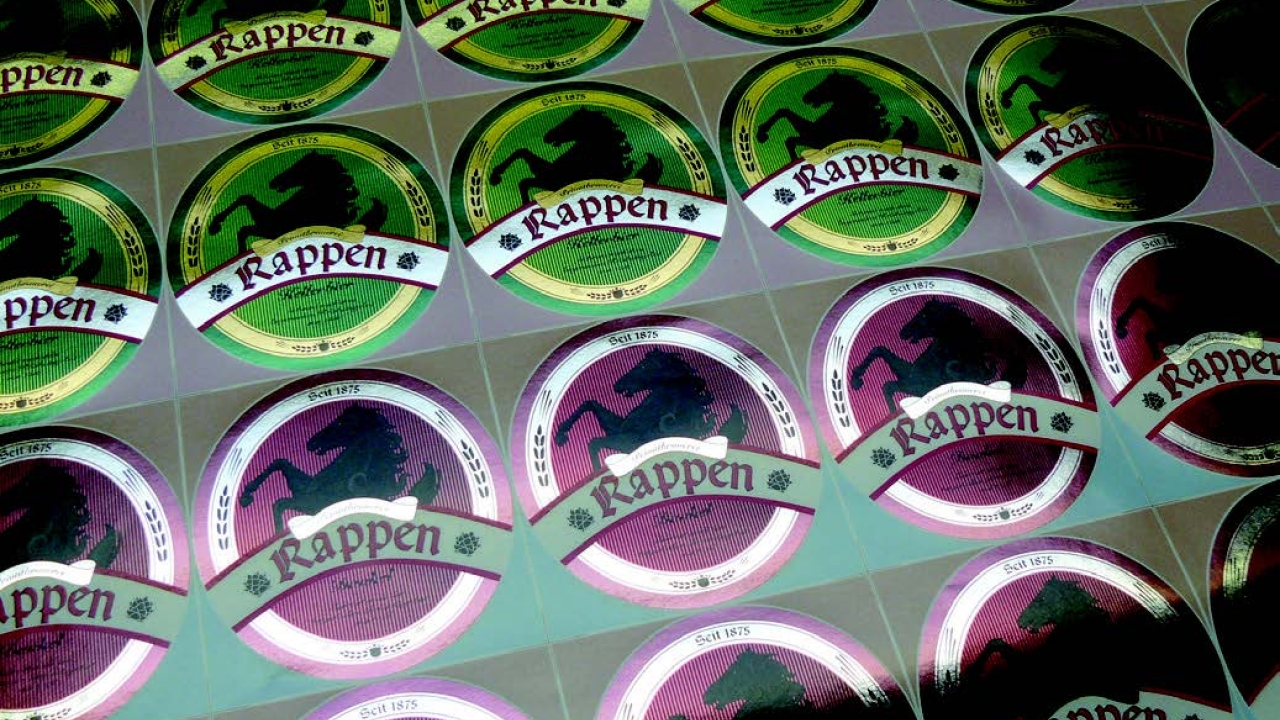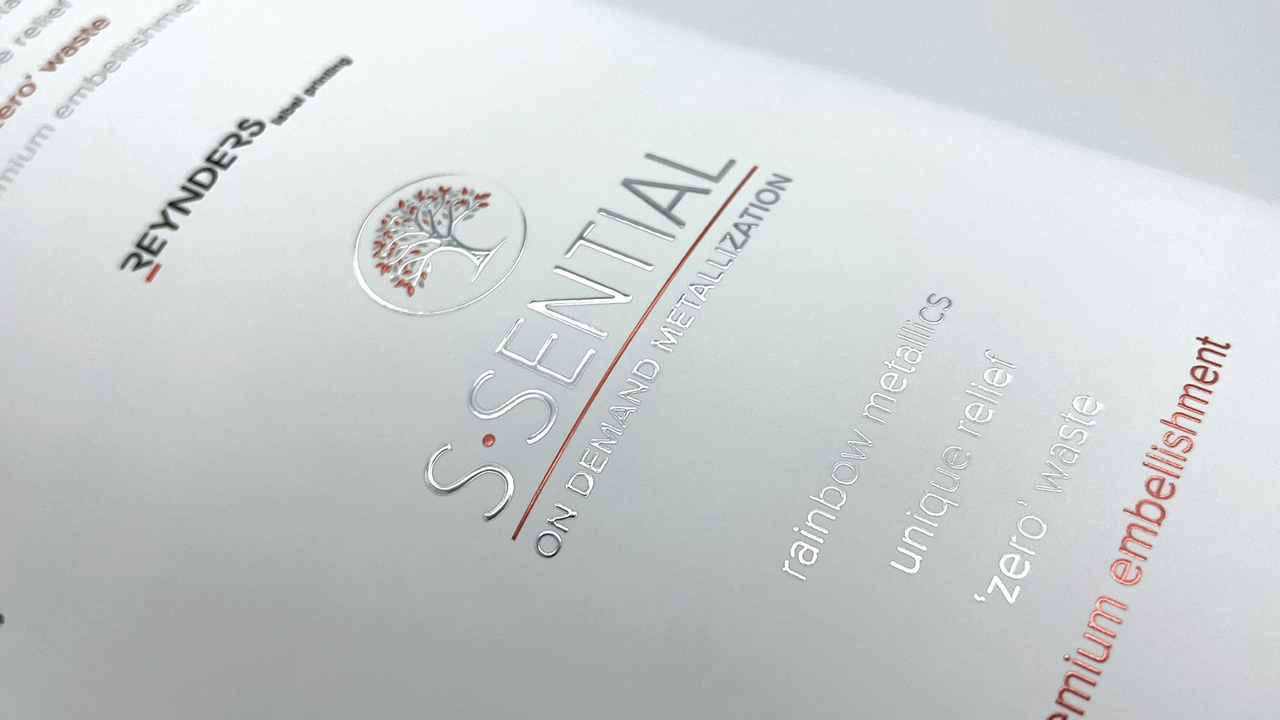Sheeted labels at the cutting edge

Little seems to change in the world of sheet-fed labels, in particular the wet glue type. Despite strong competition from other labeling technologies, these classic labels consistently account for roughly one-third of all label usage in the developed markets, rather more so in some emerging markets. Their relatively low cost and flexibility make them a popular choice for markets with high-volume runs, such as canned foods and bottled mineral water, beer, wine and spirits. While reel-fed flexo and gravure presses handle the extra-long runs, offset printing of sheeted paper and film labels remains competitive and adaptable to changing market conditions.
Looking at the basics, paper wet glue labels are printed on single or double-sided, coated and uncoated grades. They range from uncoated white, bleached kraft paper in a range of 60-100 g/m2, to specialized laminates with aluminum foil, or bright metalized finishes for printing with metallic inks. Some wine label grades have distinctive linen and brush texture surfaces. Label papers must combine good tensile strength with an appropriate stiffness level, while withstanding the demanding conditions associated with fast-running filling, labeling and conveying lines.
Heidelberg, Komori, KBA and Manroland dominate the sheet-fed label press market. Sheet sizes are either B1 format (700cm x 100cm) or B2 format (50cm x 700cm); 28 x 39 inches and 19.5 x 28 inches respectively. Configurations usually include eight or nine print units, one or two coating units, and extended, multi-pile deliveries. Print speeds have edged up from 10,000 to 12,000 sheets per hour.
Heidelberg's Speedmaster XL 75 Anicolor, which recently went into production, typifies the versatility and productivity of modern offset-litho presses. The eight-color, medium-format press includes a modified version of the company's zoneless short inking unit. It inks up sheets extremely quickly and consistently, giving saleable print from around the 10th copy; some 10 times faster than with conventional inking systems. The top-rated speed is 15,000 sheets/hour. Applied to wet glue labeling it could radically change print order volumes, perhaps augmenting a form of digital printing for variable data.
Stay up to date
Subscribe to the free Label News newsletter and receive the latest content every week. We'll never share your email address.


